Propagation report as of Sunday, December 14, 2025 11:51 PM CST
SFI (Solar Flux Index) (70 – 100+) Higher is better
A Index (1 – 11+) Lower is better
K Index ( 0 – 5) Lower is better
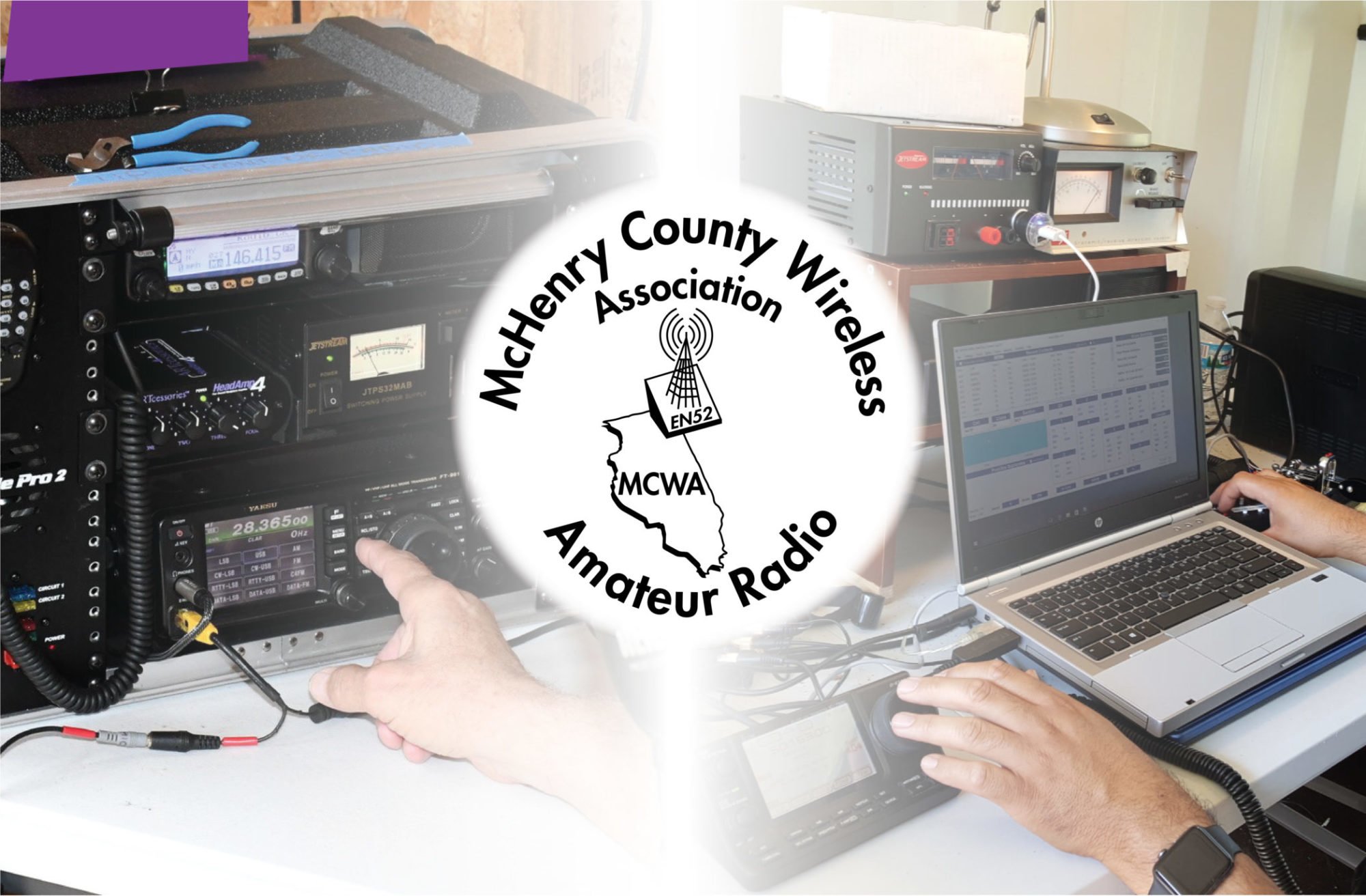
McHenry County Wireless Association
It was a lovely sunny Sunday morning for our inaugural fox hunt. The allure of freshly brewed coffee and fresh donuts was irresistible. Glenn (K9OK) and Angelo (KD9QVW) organized the event, which was held at the Hollows in Crystal Lake adjacent to the Algonquin Highway Department where the club meets.
People began gathering at ten, readying their equipment while Glenn, Angelo, and Wendell (N9REP) prepared and hid the two fox transmitters on the trails. With the transmitters hidden, the game was afoot and the hunters were off in search of their quarry. Along the way, we encountered others on the trail that were curious about what we were doing waving around these strange devices, which provided an opportunity to share about our hobby. One visitor remarked that is was like geo-caching and looked like fun.
After the foxes were located, the hunters returned to the picnic area to compare notes and enjoy some more coffee and donuts before heading out to enjoy the rest of the day.
It was interesting to see the various types of antennas and receivers that the hunters used to track down the foxes. Lyle (W9LRG) and Ralph (WB9ICF) brought their homebrewed 3-element tape measure Yagis, John (K9JK) a 3-element commercial Yagi, Glenn (K9OK) and Angelo (KD9QVW) brought their Arrow satellite antennas, and Roger (KF9D) brought both a UHF folded dipole (for close in work) AND a homebrew TDOA (Time Difference of Arrival) antenna that he built many years ago as an Elgin radio club project. Several hunters used the VK3YNG receivers that were part of a MCWA group buy several years ago, while others used handhelds with either a step attenuator, a 4 MHz offset attenuator, or tuning to the third harmonic of the fox transmit frequency.
All of these combinations worked well in the walking fox hunt with each setup having specific strengths. For example, the TDOA antenna works very well regardless of signal strength, thus not requiring an attenuator, while the VK3YNG receivers have auto switching attenuators to reduce the sensitivity of the receiver as the hunter gets closer to the fox.
I was interesting to see how multipath caused by reflections from buildings, cars, and foliage made the hunt more challenging. For example, as Ralph was tracking down one of the foxes, the signal level suddenly increased significantly when John opened the door of the restroom at the pavilion. This gave the impression that we were close to the fox, but it turned out that the door was acting as a reflector and the fox was actually several hundred feet from the location where we were searching.
A few people who had planned on attending and had assembled fox hunting setups weren’t able to attend the Sunday event, but we hope they will join us next time.
All and in all, it was a fun experience and we agreed that we should do this again. Because this is an activity that has similar elements to geo-caching and that hunters don’t need to be licensed radio amateurs, this would be a great family event and one that can be enjoyed by non-amateurs as well.
A big thank you to Glenn and Angelo for organizing this fun event and to MCWA for covering the pavilion fee and coffee and donuts.
The following people were at the hunt: Glenn (K9OK), Angelo (KD9QVW), John (K9JK), Lyle (W9LRG), Ralph (WB9ICF), Wendell (N9REP), Roger (KF9D), David (K9AT), and Sam (KC9GPY).
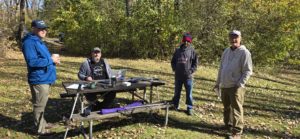 David (K9AT) enjoys a cup of coffee while Glenn (K9OK) programs the fox transmitters and Angelo (KD9QVW) and Roger (KF9D) look on.
David (K9AT) enjoys a cup of coffee while Glenn (K9OK) programs the fox transmitters and Angelo (KD9QVW) and Roger (KF9D) look on.
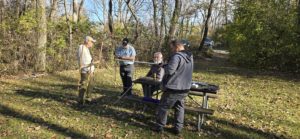 Roger (KF9D) is holding his TDOA antenna as Wendell (N9REP) signs in. John (K9JK) and Glenn (K9OK) readying their equipment for the hunt.
Roger (KF9D) is holding his TDOA antenna as Wendell (N9REP) signs in. John (K9JK) and Glenn (K9OK) readying their equipment for the hunt.
 Some of the highly skilled hunters zeroing in on their quarry with Wendell pointing to the actual location of the fox.
Some of the highly skilled hunters zeroing in on their quarry with Wendell pointing to the actual location of the fox.
 Even when you are right on top of the fox, it can be hard to find. The location of this transmitter was at the base of a tree and can just be seen (it’s the blue colored object). As this was the first hunt for many of us, the people placing the transmitters were taking it easy on the hunters and not hiding the transmitters in hard to find locations.
Even when you are right on top of the fox, it can be hard to find. The location of this transmitter was at the base of a tree and can just be seen (it’s the blue colored object). As this was the first hunt for many of us, the people placing the transmitters were taking it easy on the hunters and not hiding the transmitters in hard to find locations.
The public comment period for Notice of Proposed Rule Making (NPRM) Docket 23-120 has been extended to November 28, 2023, from the original deadline of October 30, 2023.
The Federal Communications Commission (FCC) is proposing altering the 60-meter allocation from five 2.8 KHz wide channels to a single 15 KHz segment around the existing center channel. The FCC is also proposing reducing the power limit from 100 watts ERP (Effective Radiated Power) to 15 watts EIRP (Effective Isotropic Radiated Power), which is the total power radiated by a hypothetical isotropic antenna in a single direction.
The 60-meter (5 MHz) amateur radio allocation is on a secondary basis to government use. Since amateurs were first granted the 60-meter allocation in 2002, radio amateurs and governmental agencies has co-existed without incident. It may not be one of the most used HF bands, but it has played an important role in times of emergency. The propagation characteristics make it favorable for emergency communications as demonstrated by communications between the southern United States and the Caribbean as well as in Alaska.
The ARRL is advocating for keeping the existing upper and lower two channels, allocating a 15 KHz segment centered on the middle channel, and keeping the existing 100 watts ERP power limit. This is similar to the Canadian band plan. The League is requesting amateurs submit comments about the NPRM to the FCC before November 28th and have provided a resource link with instructions:
https://www.arrl.org/60-meter-band
The proposed changes will have a detrimental impact on amateur radio’s ability to train and respond to disasters (e.g., earthquakes, hurricanes, tornados, floods, wildfires, etc.), which have become more frequent.
If these new rules become effective, there will be a number of negative consequences.
Most radios that have been manufactured since 2002 are preprogrammed for the five channels authorized for use. Radios that are field programmable could receive firmware updates from the radio manufacture that will allow access to the new allocation, but updates would be at the discretion of the radio vendor and on their time table. Radios that cannot be updated will only be usable on a single frequency. This will make many radios virtually unusable on 60-meters.
Assuming a dipole for an antenna, reducing the power from 100 watts ERP to 15 watts EIRP would be over a 10 dB reduction in power (100 watts to 9.1 watts). During times of emergency, 100 watts could make the difference between getting the message through or not. As radio amateurs and governmental agencies have successfully coexisted for over 20 years, it is not clear why this power reduction is being proposed.
Voice your opinion and get your comments in before November 28th.
The McHenry County Wireless Association celebrated its forty-fifth anniversary at the club’s monthly meeting on September 5, 2023. Around fifty members and supporters were in attendance for the event, including those attending from around the country via Zoom.
After posing for a group photo and enjoying two delicious cakes, the meeting resumed, electing the new officers for 2023-2024:
The newly elected officers will be seated at the October meeting on October 3rd.
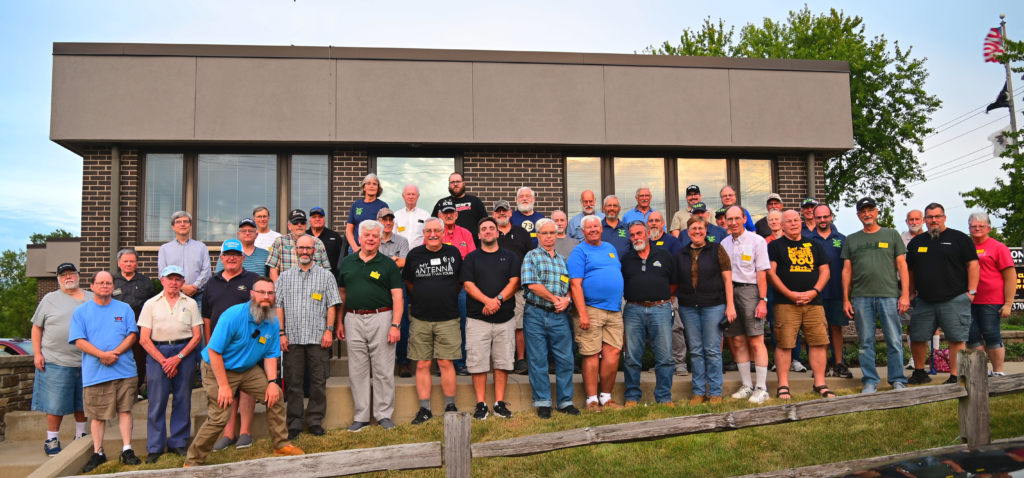
Dan Larson (KD9M), who took this group photo managed to vault into the air and stick his landing before the self-timer on his camera snapped the photo. Dan can be seen in the front row, third from the left.
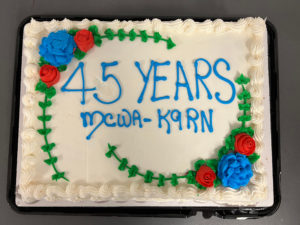

The club was formed on September 12, 1978 and consisted of thirty-one charter members. Three of the original charter members continue to be active in the club: John Dewey (KA9CAR), Doug Mather (KD9PK), and Art Reis (K9XI). A fourth founding member, Jerry Heien (N9AVY) passed away in October 2022.
Today, MCWA is an ARRL affiliated club with a membership of nearly one hundred forty members. The club meets on the first Tuesday of each month at 7 PM at Algonquin Township in Crystal Lake. All are welcome to attend.
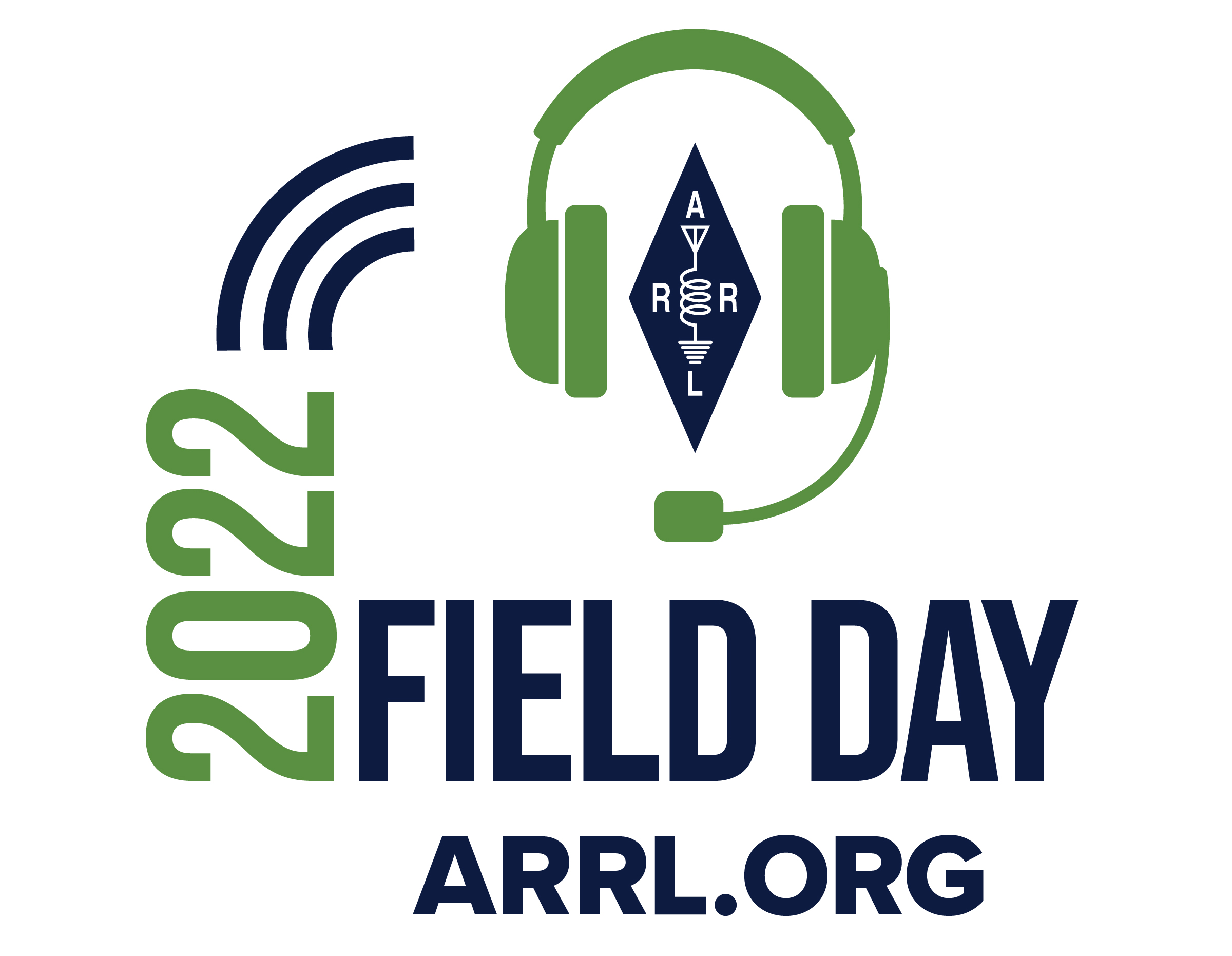
Mark your calendars for June 25th and 26th. The McHenry County Wireless Association (MCWA) will participate in the ARRL Field Day event at the Rush Creek Conservation Area in Harvard, IL.
The site is located off of McGuire Road, just east of Route 14. For reference the Walmart is located at the corner of McGuire Road and Route 14.
Field Day is amateur radio’s open house combining public service, emergency preparedness, community outreach, and technical skills all in a single twenty-four event. It has been an annual event since 1933 and remains the most popular event in amateur radio.
Guests are welcome and encouraged to visit us during the event, which begins at 1 PM Saturday. For more information contact us at info@mcwa.org.
In addition to MCWA, two other Field Day sites will be in operation in McHenry County: McHenry County RACES at the Government Center in Woodstock and The 415 ARC at 3208 Bay Road, Crystal Lake.